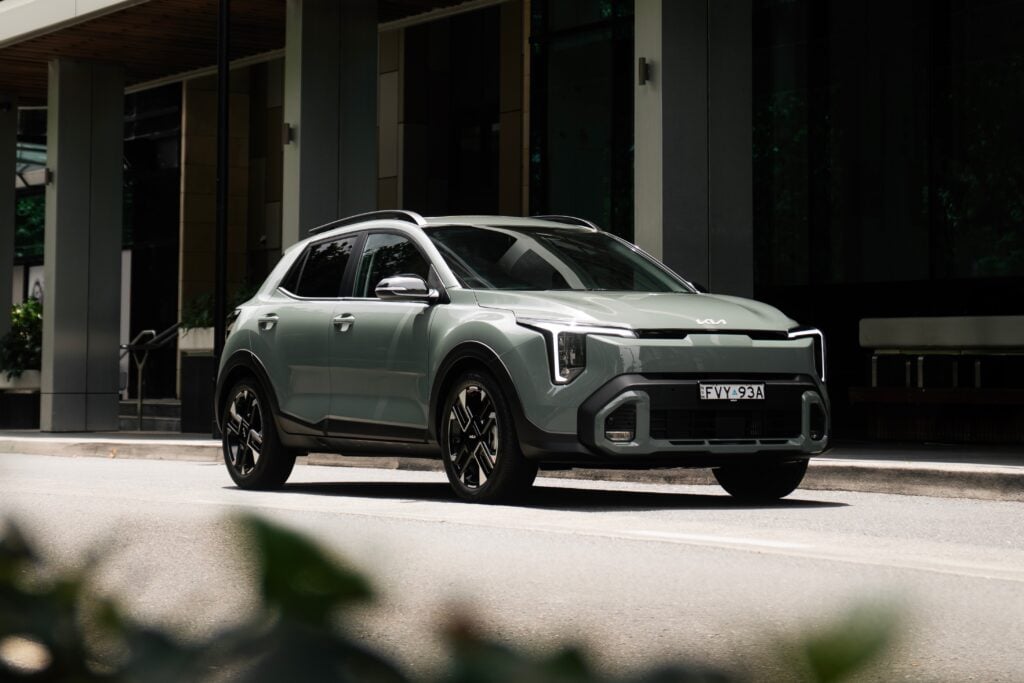“Is it better than the Porsche 911?” That’s the question Aston Martin boss Andy Palmer asks his engineers and it’s not an unreasonable one for you to ask, too.
And the answer is? Well, as they’ll tell him and I’ll tell you over the next 1500 words or thereabouts, it’s not that simple, mate. In some ways, yes, it is better – in many ways, no, it isn’t – but, for the most part, it’s just different. And that’s fine, too.
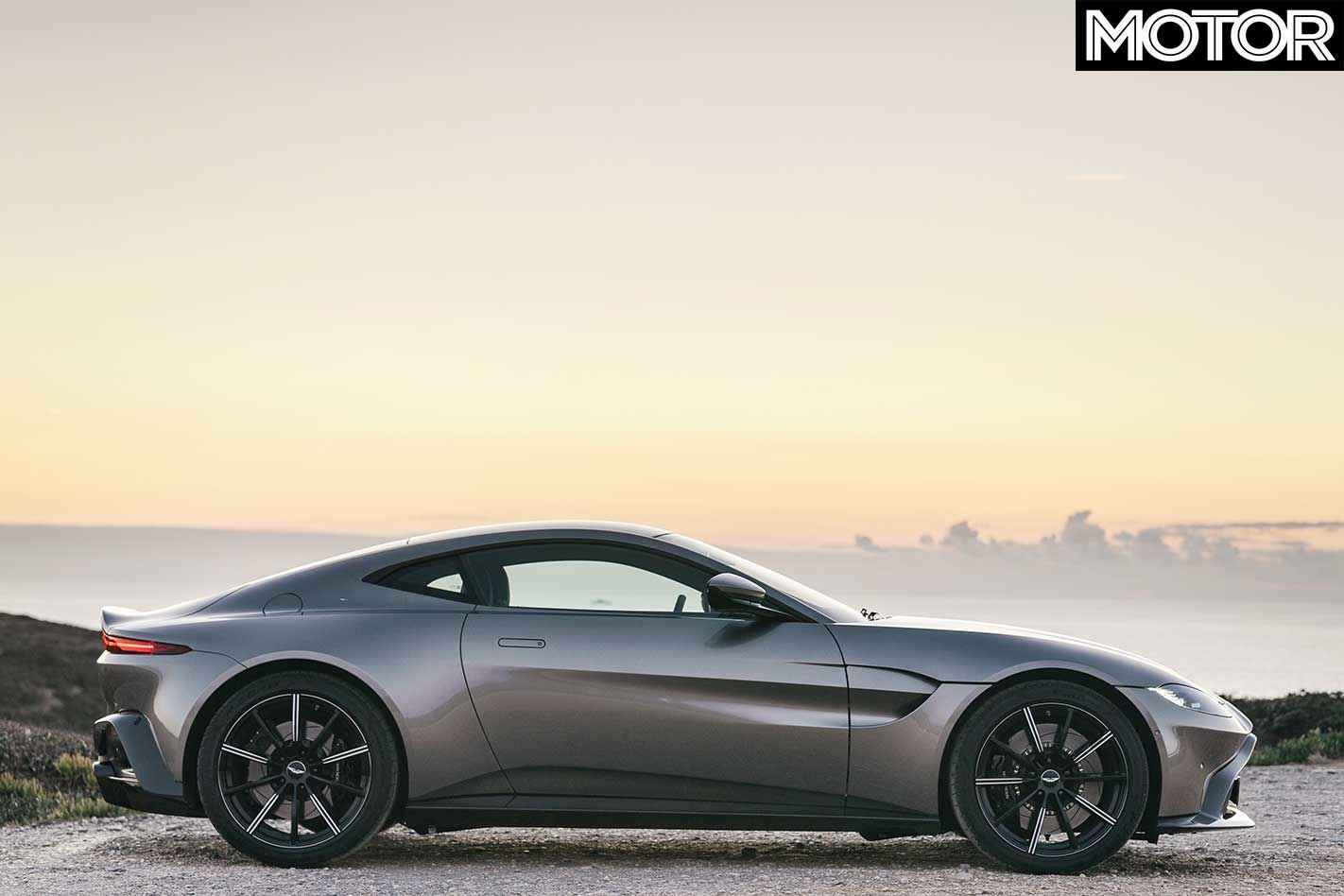
Like a normal car company. “It’s not rocket science,” says Palmer. First, then, was the DB11, the big, comfy grand tourer, at one end of the sports car scale, and now there’s the Vantage, which sits at the other end, but using a fair degree of DB11 parts.
It’s a strict two-seater, with a Mercedes-AMG 4.0-litre twin-turbocharged V8 engine sourced from Aston’s partner (and part-owner) in the front, and power going from there to the back via an eight-speed transaxle torque-converter gearbox and an electronically controlled limited-slip differential.
To see beneath the new Vantage’s skin is to see the advances Aston has made since the old VH architecture died and the new, still all-aluminium structure arrived. Only 33 per cent of the structure is shared with a DB11, which, at 4465mm, the Vantage is 274mm shorter than but, at 1942mm across the body (2153mm to the mirror ends), 2mm wider. A 911 is a thumb’s width longer but, at 1808mm, rather a lot narrower. Which could be important.

There are more pressings and castings than extrusions in an Aston’s make-up these days. They’re more expensive, but more space efficient for a given strength, so the Vantage seats two big people very comfortably and the boot, underneath a hatch tailgate, is big enough for two golf bags.
The skin is a mix of aluminium and plastic composites, and dry weight is quoted at 1530kg including the lightest options. A 911 GTS is less than that even full of fluids and with a statutory 75kg added to it to represent driver and fuel. Like for like, the Vantage could be 10 per cent heavier than a 911.
That could be important, too. For the first time in a generation, the Vantage is wilfully different from other Astons outside (do you like it? I do on three sides and the front I’m getting used to) and inside, too.
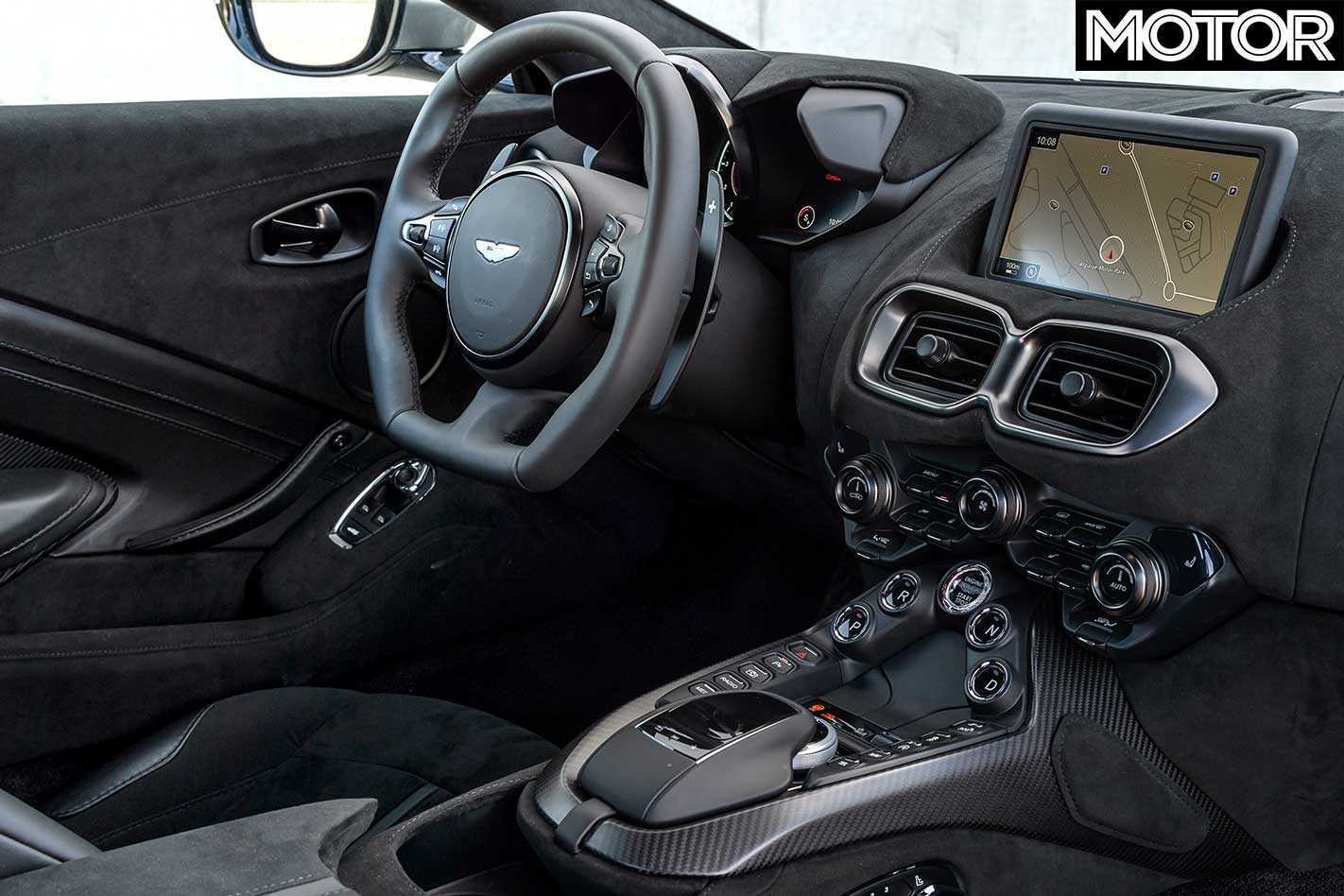
I like most of the inside as well: the finish is good, the plastic on the air vents grates a bit less in a sports car than a grand tourer and you can, apparently, have a round steering wheel. It all works most nicely with the racier Alcantara trim, to my eyes. The leather looks a bit stretched around some seams and stitches but, well, I suppose it’s a sports car. Shouldn’t things be pulled tight? A bit racy?
Mechanically, it sounds like they are. In the V8 DB11, which shares this engine and its 375kW tune, the engine’s note – so raucous and voluble in its AMG applications – has been turned right back. Here, they’ve let it rather loose again. A few years ago, you could have chosen any of several different Astons for the same job. This one, you’re in no doubt, is the loud one.
That extends to the drive modes, which, of course, it has. Ultimately, these policies mean more to Aston than us, but whereby the DB11 has GT, Sport and Sport Plus chassis settings, the Vantage’s dampers are shifted along an imaginary scale to Sport, Sport Plus and Track, all intended to be tighter, firmer, to the point that Track is arguably too stiff for bumpier race tracks.
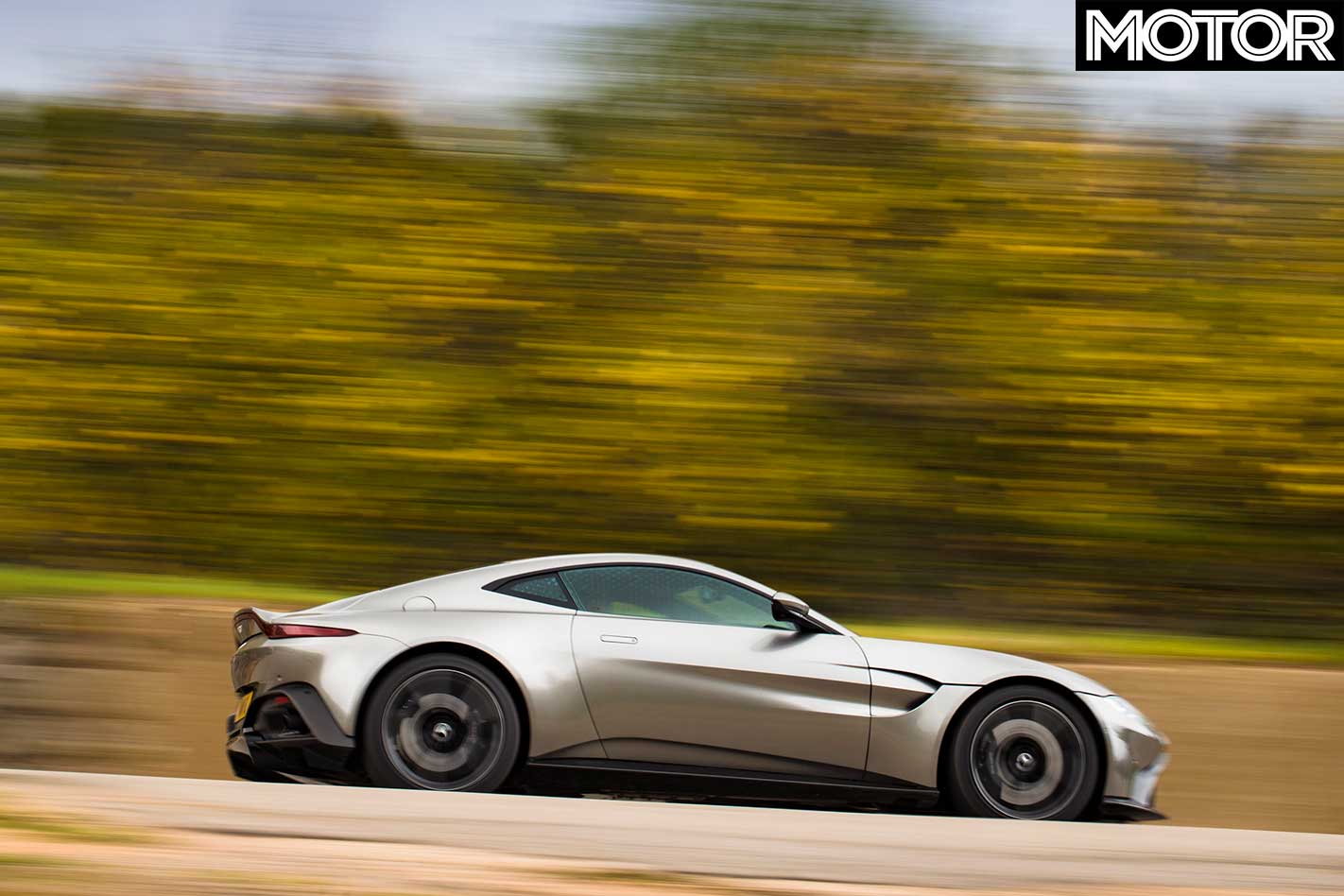
It’s good on those, though, Aston says. In fact, they say, it slides quite easily. Aston Martin is good at understatement. Remember a few things: yes, the Vantage is heavier than a 911, but the 1630kg or so it’ll weigh is competitive among the other company the Aston will keep.
Its mechanical layout (the entire block sits behind the front axle line) means that the weight distribution is 50/50 front to rear. Only one tyre option, a bespoke Pirelli P Zero, is offered.
It has all been engineered by people who believe that cars should handle properly beyond the limit. And off means off on the three-stage stability control… goody gumdrops.
On a circuit, then, the Vantage is terrific. The engine note is as raucous and hard as you’d want it to be, the (optional) carbon-ceramic brakes stop it brilliantly and hold out in warm temperatures, and the tyres resist wear better than 685Nm from 2000rpm has any right to allow.
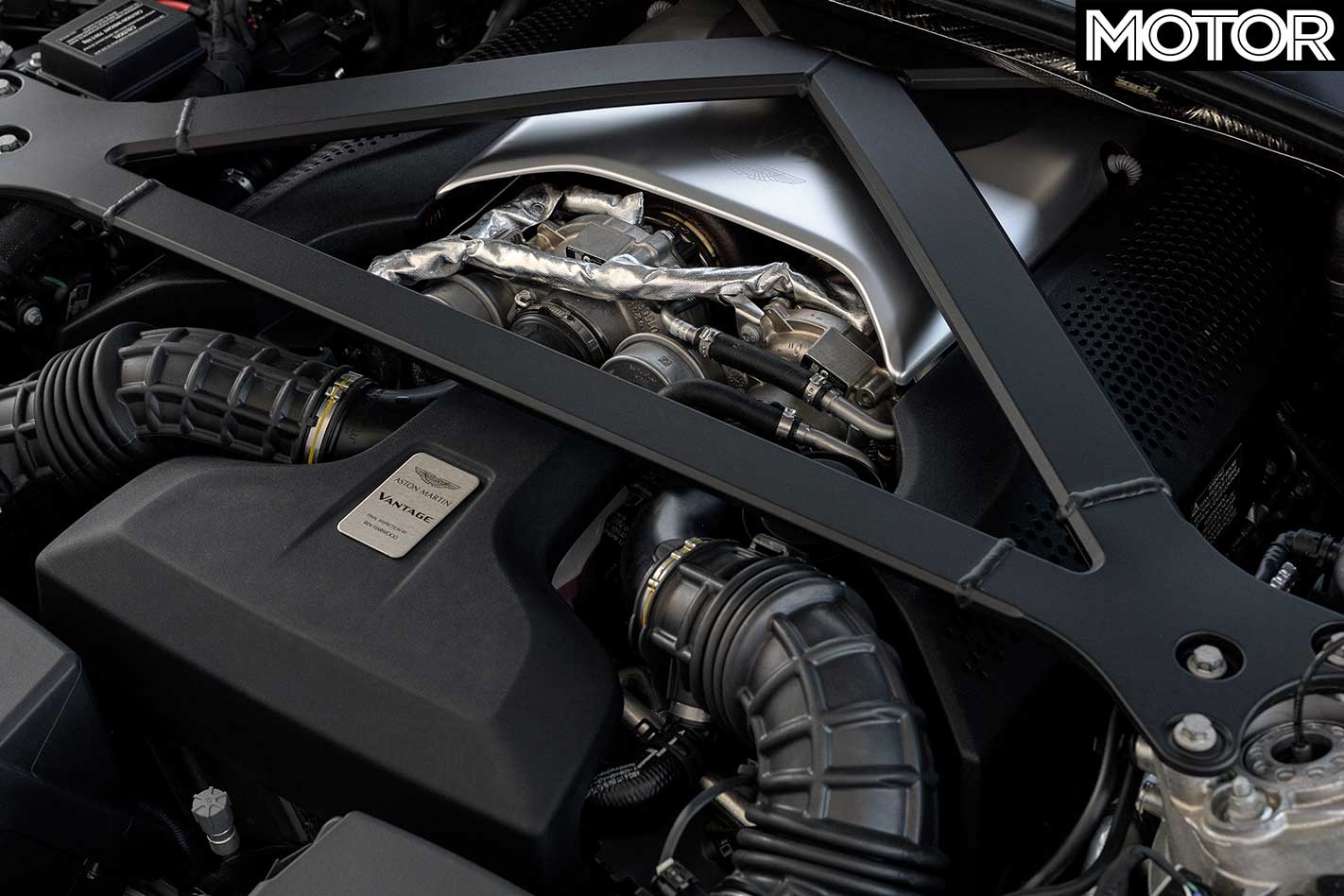
Body control is good, even in the slackest of suspension modes, and there’s a great sense of agility because it feels like the car pivots around its centre – where you’re seated.
The front goes where you point it and there’s a terrific level of control and precision over the rear. The rear subframe is rigidly, rather than squishily, mounted to the chassis and that apparently gives excellent lateral stiffness, so the car’s back axle does what the engine and e-differential (which can be fully locked or fully open, depending on what’s being asked of it) wants it to do.
Under power, on a track, what it wants to do is lock up to precisely your amount of bidding, making the cornering line entirely your choice. It’s not unlike a Ferrari 488 GTB in that fashion – only, because the engine is mounted low and at the front, the beyond-limit balance is even better, to the extent that I’m not sure there’s another current production car this docile on a circuit.
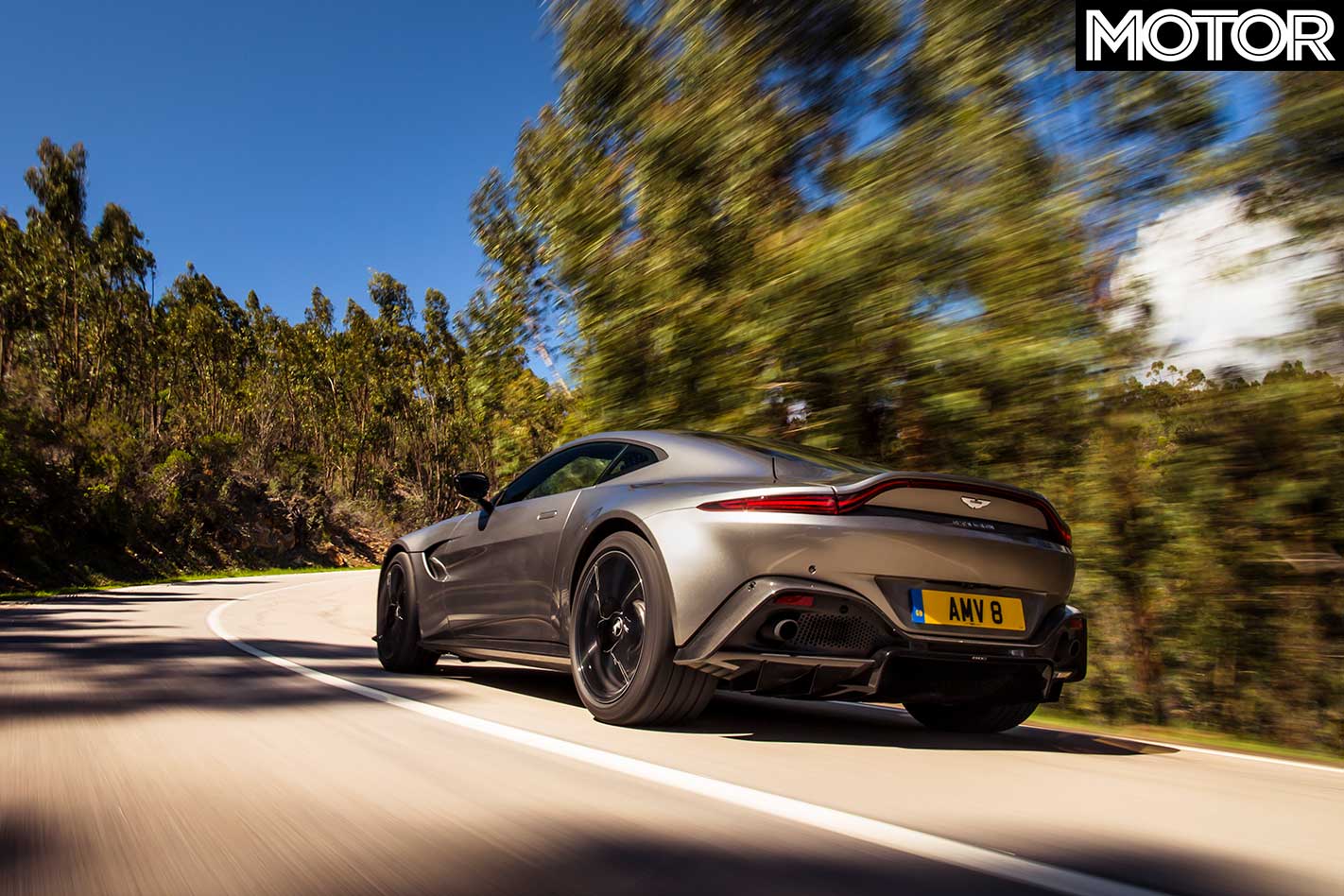
You can drive it in a racier fashion, too, where it’s still balanced and beautifully neutral, but less incisive than a 911. So they do different things better. The 911: nuanced steering precision. The Aston: antics.
Anyway, that’s all jolly, but this is a road car, after all. It’s one whose ride is composed and fluid, especially in Sport mode, but Sport Plus doesn’t usually throw it out of kilter.
The engine and transmission go through various stages of angry as you turn those up, but the moderate one is good for the road – grumbly and growly and plenty responsive enough – while the big, easy paddles, fixed to the steering column so they’re always where you left them, are some of the easiest to use in the business. Although, the column-mounted position isn’t always to everyone’s taste.

Pulling one puts you in manual mode, an extended pull of the upshift puts you back in D. All shifters should be like this, especially when mated to a gearbox that’s as smooth as the ZF eight-speeder. (It sometimes hesitates to give you downshifts on a circuit, though, which is a Mercedes-ish thing to do, so is perhaps down to the engine, not the gearbox.)
The steering? On track, it is full of feel, which, at lower cornering forces, naturally it doesn’t quite replicate on the road – a 911, which has a lightly loaded front end and less need of assistance, is, I think, more talkative – but that’s fine. It is smooth and fast, centres as it should and says as much as you’d hope.
The balance and poise are still there, too, albeit with the caveat that this is still a wide car, and from inside, you can see none of the exterior bodywork. So it’s just as well it is poised, responsive and predictable, because you’re relying on it to do the shrinking around you. To an extent, it does: with the aural and tactile cues this car gives you, it’s thoroughly enjoyable.

And here’s the thing: I’m considering the Vantage against consistently the best sports car in the business here, and it goes toe to toe with it. Are the others at the lofty $299,950 the Vantage demands? Some offer different things, better in one or two areas, but I’m pretty confident none is overall as complete and enjoyable as the Aston.
So is the Vantage better than a Porsche 911 GTS? Perhaps not. But it’s different enough. Crucially, it’s good enough in enough ways to be a genuine, desirable alternative to the status quo. To be considered different rather than worse. And to do quite a lot of things better. When you consider the respective sizes, budgets and facilities of Aston and Porsche, that in itself is a spectacular achievement.
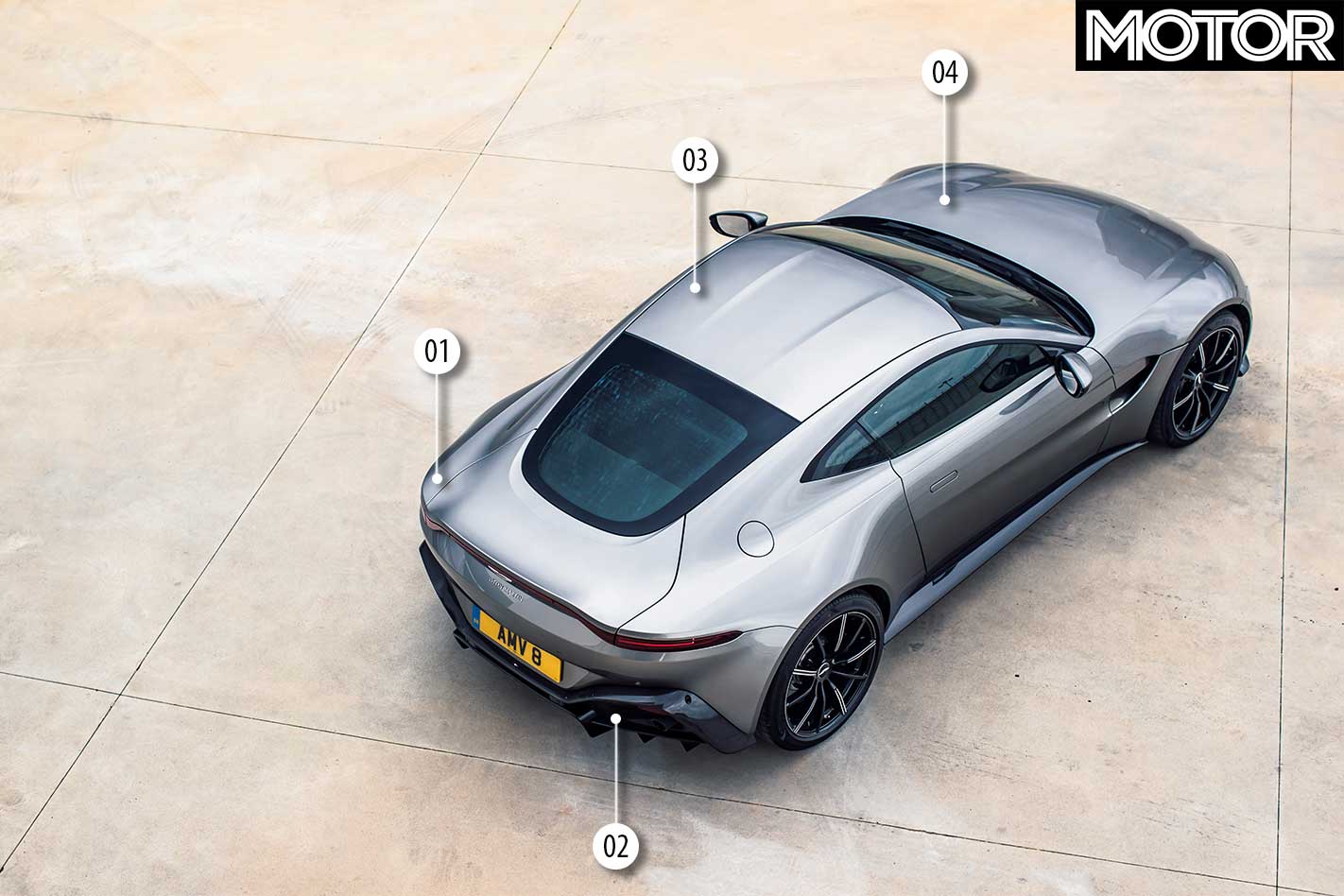
01/SKIN DEEP Inspired by the Vulcan, steel panels wrap around an aluminium body while the V8 hides under a clamshell bonnet
02/AERO GAMES The rear diffuser creates low pressure under the car, aiding air flow and helping achieve an overall 77kg downforce “at speed”
03/CABIN FEVER Form hasn’t taken over function as the driver-focused cockpit features a low seating position – there’s even a 350-litre boot
04/STRIP KING The Vantage isn’t just a catwalk star as its 0-100km/h time of 3.6sec and a top speed of 314km/h contradict its entry-level status
FAST FACTS 2018 Aston Martin Vantage
BODY: 2-door, 2-seat coupe DRIVE: rear-wheel ENGINE: 3982cc V8, DOHC, 32v, twin-turbo BORE/STROKE: 93.0 x 92.0mm COMPRESSION RATIO: 10.5:1 POWER: 375kW @ 6000rpm TORQUE: 685Nm @ 2000-5000rpm WEIGHT: 1530kg POWER-TO-WEIGHT: 245kW/tonne TRANSMISSION: 8-speed automatic SUSPENSION: struts, anti-roll bar, adaptive dampers (f); multi-links, coils, anti-roll bar, adaptive dampers (r) L/W/H: 4465/1942/1273mm WHEELBASE: 2704mm STEERING: electrically assisted rack-and-pinion BRAKES: 400mm ventilated discs, 6-piston calipers (f); 360mm ventilated discs, 4-piston calipers (r) WHEELS: 20.0-inch (f/r) TYRES: Pirelli P Zero; 255/40 R20 (f); 295/35 R20 (r) PRICE: $299,950LIKE: Raucous engine; riotous handling; it’s not a 911 DISLIKE: It’s not a 911; interior instruments RATING: 4.5 out of 5 stars




